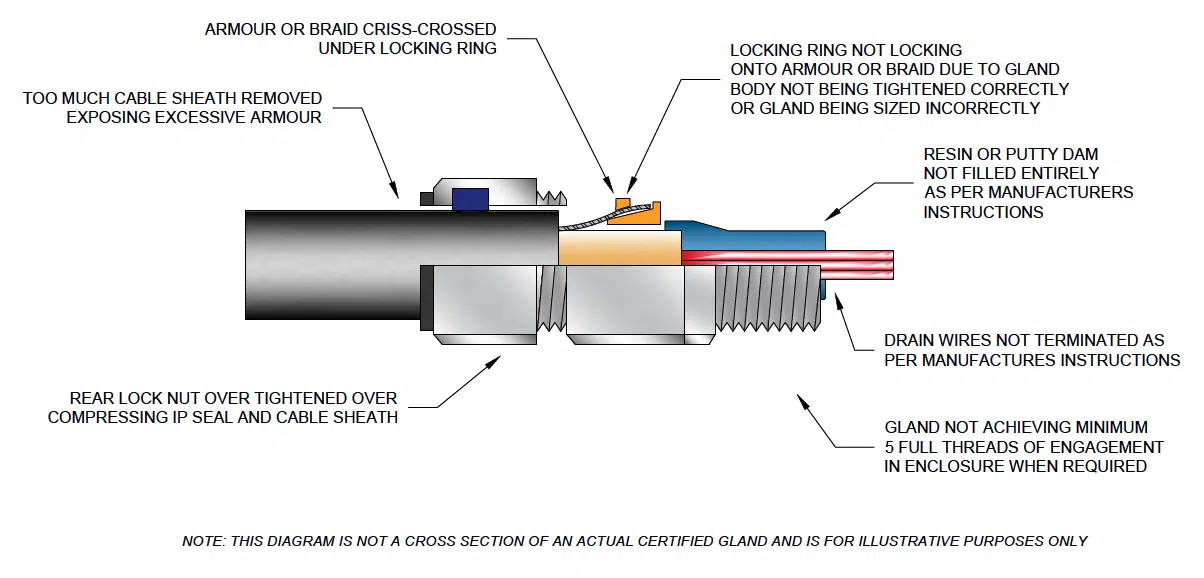Unknown Facts About Roar Solutions
Wiki Article
What Does Roar Solutions Mean?
Table of ContentsThe Main Principles Of Roar Solutions Getting The Roar Solutions To WorkExamine This Report about Roar Solutions
In such an environment a fire or surge is possible when 3 standard problems are met. This is frequently referred to as the "unsafe location" or "burning" triangle. In order to protect setups from a possible explosion a technique of evaluating and classifying a possibly harmful area is called for. The purpose of this is to make sure the appropriate option and installation of devices to eventually avoid a surge and to make certain safety of life.
(https://pagespeed.web.dev/analysis/https-training-roarsolution-com-au/mm9wy036rp?form_factor=mobile)
No devices needs to be set up where the surface temperature of the equipment is higher than the ignition temperature of the provided hazard. Below are some typical dust unsafe and their minimum ignition temperature level. Coal Dust 380C 225C Polythene 420C (thaws) Methyl Cellulose 420C 320C Starch 460C 435C Flour 490C 340C Sugar 490C 460C Grain Dirt 510C 300C Phenolic Material 530C > 450C Aluminium 590C > 450C PVC 700C > 450C Soot 810C 570C The likelihood of the hazard being present in a concentration high adequate to create an ignition will certainly vary from area to area.
Unsafe location electrical devices maybe made for use in higher ambient temperature levels. Field Repair By Authorised Employee: Difficult screening may not be called for nonetheless specific procedures might require to be complied with in order for the equipment to preserve its third party score. Each piece of tools with an unsafe rating must be examined separately.
The Basic Principles Of Roar Solutions
The equipment register is a thorough data source of equipment records that includes a minimum set of fields to determine each product's location, technical criteria, Ex-spouse classification, age, and ecological data. This info is critical for monitoring and taking care of the equipment efficiently within unsafe locations. In comparison, for periodic or RBI sampling inspections, the quality will be a mix of In-depth and Close inspections. The ratio of Comprehensive to Close evaluations will be figured out by the Devices Risk, which is examined based on ignition threat (the probability of a source of ignition versus the likelihood of a combustible environment )and the hazardous location category( Area 0, 1, or 2). This variation will certainly additionally affect the resourcing demands for job prep work. As soon as Whole lots are defined, you can develop tasting plans based upon the example dimension of each Lot, which describes the variety of arbitrary tools products to be evaluated. To determine the required example dimension, 2 facets require to be assessed: the size of the Whole lot and the classification of inspection, which suggests the level of effort that need to be applied( lowered, normal, or boosted )to the evaluation of the Whole lot. By incorporating the classification of examination with the Whole lot size, you can after that establish the appropriate rejection criteria for an example, indicating the allowable variety of faulty things discovered within that sample. For even more details on this procedure, please refer to the Power Institute Standards. The IEC 60079 standard recommends that the optimum period in between evaluations must not surpass three years. EEHA evaluations will certainly likewise be performed outside of RBI projects as component of set up upkeep and equipment overhauls or fixings. These examinations can be attributed towards the RBI sample sizes within the impacted Great deals. EEHA inspections are carried out to recognize faults in electrical equipment. A heavy scoring system is important, as a single tool might have numerous mistakes, each with varying levels of ignition threat. If the combined score of both examinations is less than twice the fault rating, the Great deal is considered acceptable. If the Great deal is still considered undesirable, it has to undergo a complete evaluation or validation, which may trigger stricter examination methods. Accepted Lot: The reasons for any type of mistakes are recognized. If a common failing mode is found, extra tools might call for maintenance. Mistakes are categorized by severity( Safety, Integrity, Home cleaning ), ensuring that immediate concerns are analyzed and resolved immediately to reduce any kind of effect on safety and security or procedures. The EEHA data source need to track and videotape the lifecycle of mistakes together with the restorative activities taken. Carrying out a durable Risk-Based Evaluation( RBI )technique is critical for making certain compliance and security in managing Electric Equipment in Hazardous Locations( EEHA) (hazardous area course). Automated Fault Scoring and Lifecycle Administration: Effortlessly take care of mistakes and track their lifecycle to enhance inspection precision. The introduction of this assistance for risk-based evaluation additionally reinforces Inspectivity's setting as a best-in-class option for regulative conformity, in addition to for any asset-centric assessment use case. If you are interested in discovering more, we invite you to ask for a demonstration and find how our solution can transform your EEHA management procedures.
See This Report about Roar Solutions

In terms of explosive threat, a dangerous location is an atmosphere in which an eruptive environment is present (or may be expected to be existing) in amounts that call for unique precautions for the construction, installment and use of equipment. hazardous area course. In this post we discover the difficulties dealt with in the office, the danger control procedures, and the needed proficiencies to function securely
It is an effect of modern life that we produce, store or manage a series of gases or liquids that are deemed combustible, and a series of dirts that are considered flammable. These materials can, in specific conditions, develop eruptive environments and these can have significant and terrible repercussions. Many of us recognize with the fire triangular eliminate any kind of check my reference among the three elements and the fire can not take place, but what does this mean in the context of unsafe areas? When breaking this down into its easiest terms it is essentially: a mix of a particular amount of release or leak of a particular substance or product, combining with ambient oxygen, and the visibility of a resource of ignition.
In the majority of circumstances, we can do little concerning the degrees of oxygen in the air, but we can have significant influence on sources of ignition, for instance electric devices. Hazardous areas are documented on the harmful location category drawing and are identified on-site by the triangular "EX" indicator. Right here, amongst other vital info, areas are divided right into 3 types relying on the hazard, the likelihood and duration that an eruptive atmosphere will exist; Zone 0 or 20 is considered the most dangerous and Zone 2 or 22 is considered the least.
Report this wiki page